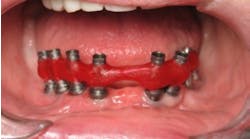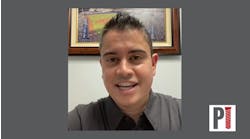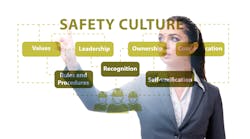Screw this … right into my mouth, please: How to achieve better case acceptance with dental implants
I shall never forget the words spoken in my dental office one day, as I happened to stroll by the front desk: “Yeah, an implant is just like a screw placed into the bone of your jaw.”
Clearly I had not done enough training in optimal word choice usage. Once again, communication played a role in our case acceptance as a team, not anyone’s technical abilities.
ALSO BY DR. LISA KNOWLES |Do you have symbiotic or life sucking relationships in your dental practice?
So often we blame our team members for the practice’s inability to achieve superior case acceptance. I know I did (and occasionally still do — I admit it). The real problem lies within a lack of training and preparation for these types of situations. We, the doctors, have to consider how the technical, medical jargon sounds to our patients. Although we can be blunt and talk about surgeries and grotesque trauma cases over breakfast, the rest of the world does not operate that way, nor does it care to. We have to learn to tone it down and be bilingual when we speak with our teams, so that they will have the technical version and the sugarcoated version to use with our patients. Only then will patients want to swallow these options and pay for them.
Photo courtesy of Dr. Richard Torres. His gallery is available on Instagram @ritxardtorres.
ALSO BY DR. LISA KNOWLES |General recommendations for the general practitioner regarding endodontic referrals
Follow these tips for better case acceptance with dental implants in your office:
1. Refer to the implant as an artificial, bone-friendly root — not a screw.
2.Ensure each team member uses the same language when referencing implants. One team member using the less-than-optimal word verbiage can ruin the mojo of the excited patient.
3.Create role-playing cards and practice with your team. Come up with ideal communication phrases to explain treatment and desired outcomes to patients on the common procedures performed in the office.
4.Do not let a new team member “loose” without formal training on communication within the office. Cultural communication norms are important for new team members. The more the entire team speaks the same language, the more often the patient will hear a similar message. This engrains a clear message for the patient to think about and talk about with others during the contemplation phase.
5.Visuals help patients picture the implant in their mouths. Show the patient a 3-D model of an implant.
6.Reassure the patient about pain and the procedure itself. If a team member (or a family member) in the office has had an implant, discuss his or her particular case with the patient. There is nothing like a live testimonial to help reinforce a patient’s decision. One of the hygienists I work with has an implant, and she consistently shows off hers to patients. She also explains that her procedure was less painful than the tooth extraction itself.
7.Revisit the values and outcomes of getting an implant placed over other lifestyle purchases. The phrases “most tooth-like,” “easily cleaned,” and “lifelong” are important talking points.
8.Discuss the financial options, if needed. Many of my patients are happy to realize they can have the implant placed first, and then wait for several months before they need to pay for anything else. I make a big deal about this, and also praise them for choosing function and oral health.
9.Heighten, don’t hound; if something new arises in the implant field, I use this as a good reason to bring up the implant option with the patient again. I do not hound patients about getting implants, but I do heighten their awareness about an added benefit or outcome of the procedure — especially if it appeals to their motivating factors.
10.Go into the conversation mentally excited about replacing teeth. I try to think about what I would want in my mouth if I lost a tooth. I wouldn’t settle for a bridge, or even consider a partial knowing an implant is an option. Cost should be the last thing we discuss. Offering the best in dentistry is an honor; we have the ability to offer something that is nearly tooth-like … something previous dentists would have loved to have had in their options bag.
As with many things, preventive treatment is the best way to ensure optimal results. With upfront communication training, team members and doctors will feel comfortable when explaining treatment to patients. There will be no embarrassing word or mumbled phrase that emerges. Patients can feel confident when making choices about their care because the team confidently taught them about their dental health and also reassured them about their dental care.









